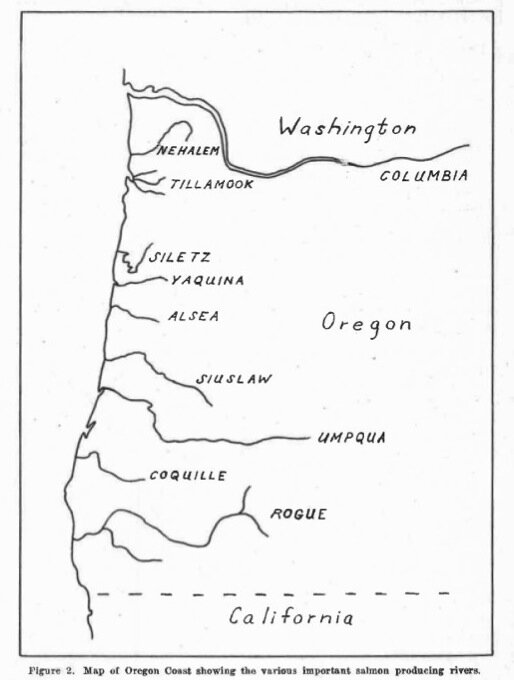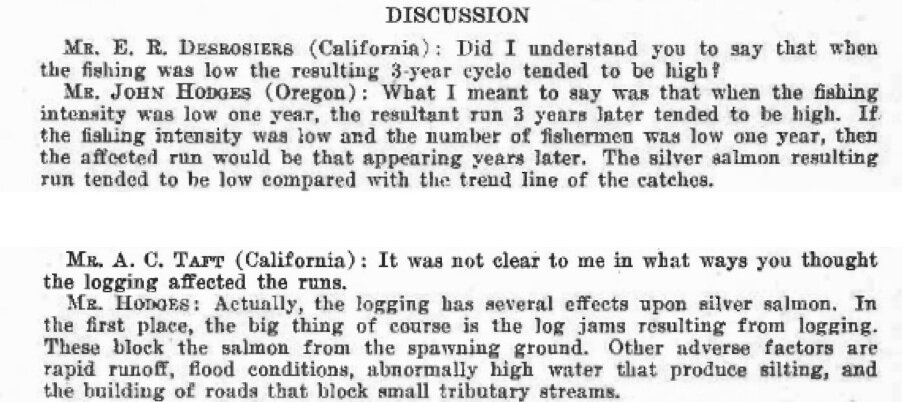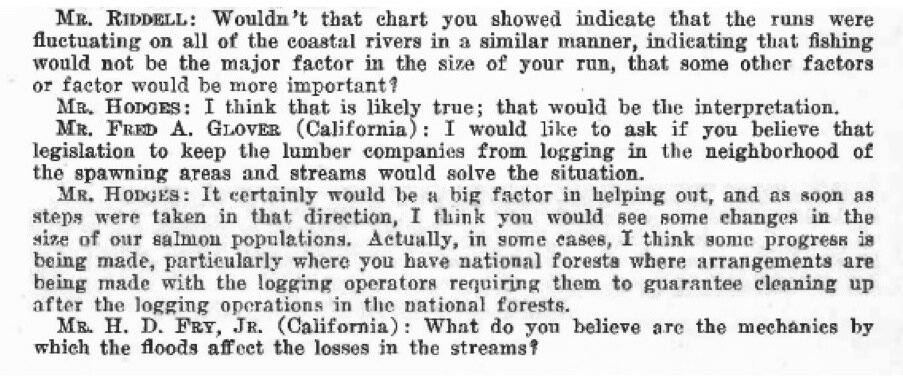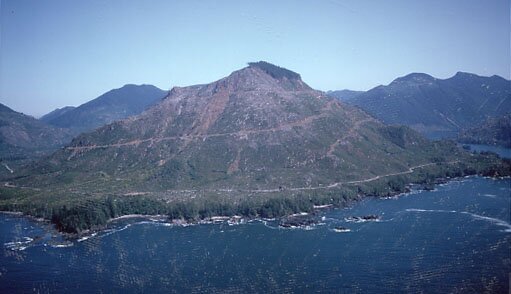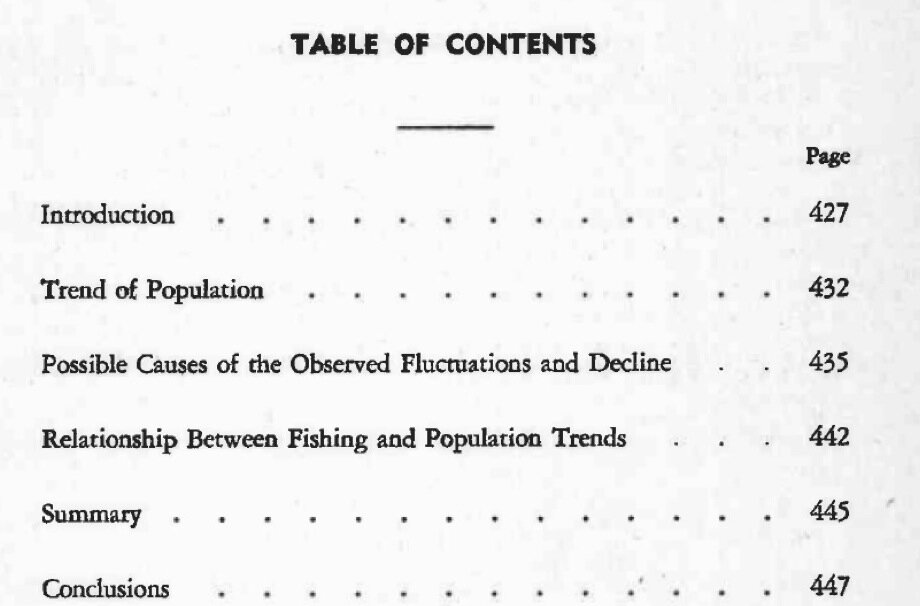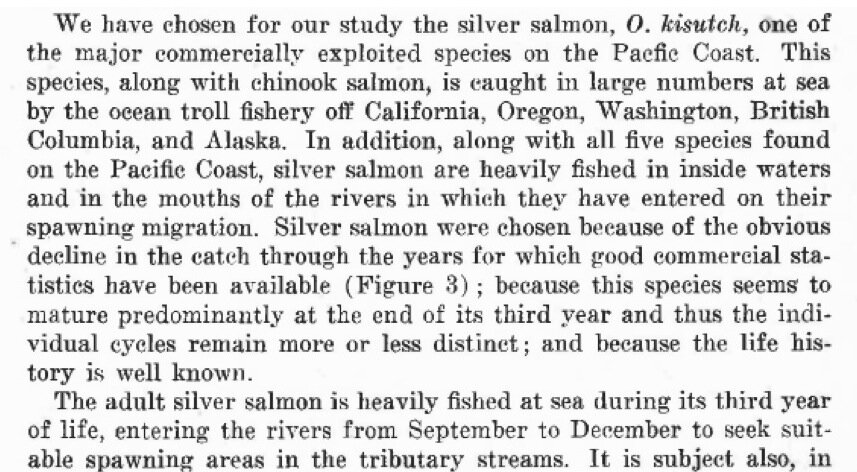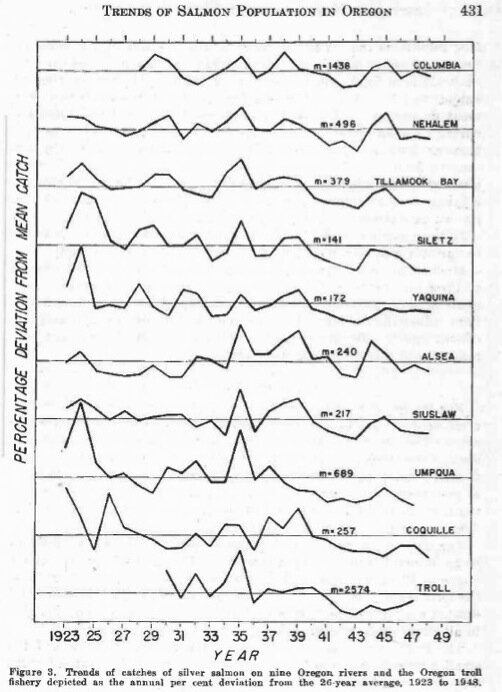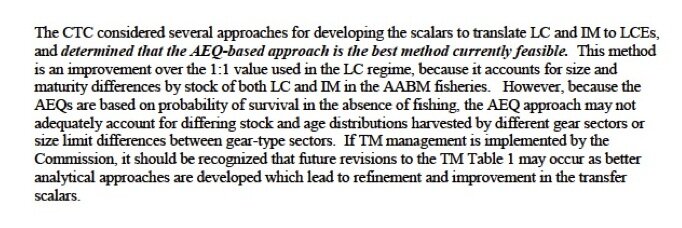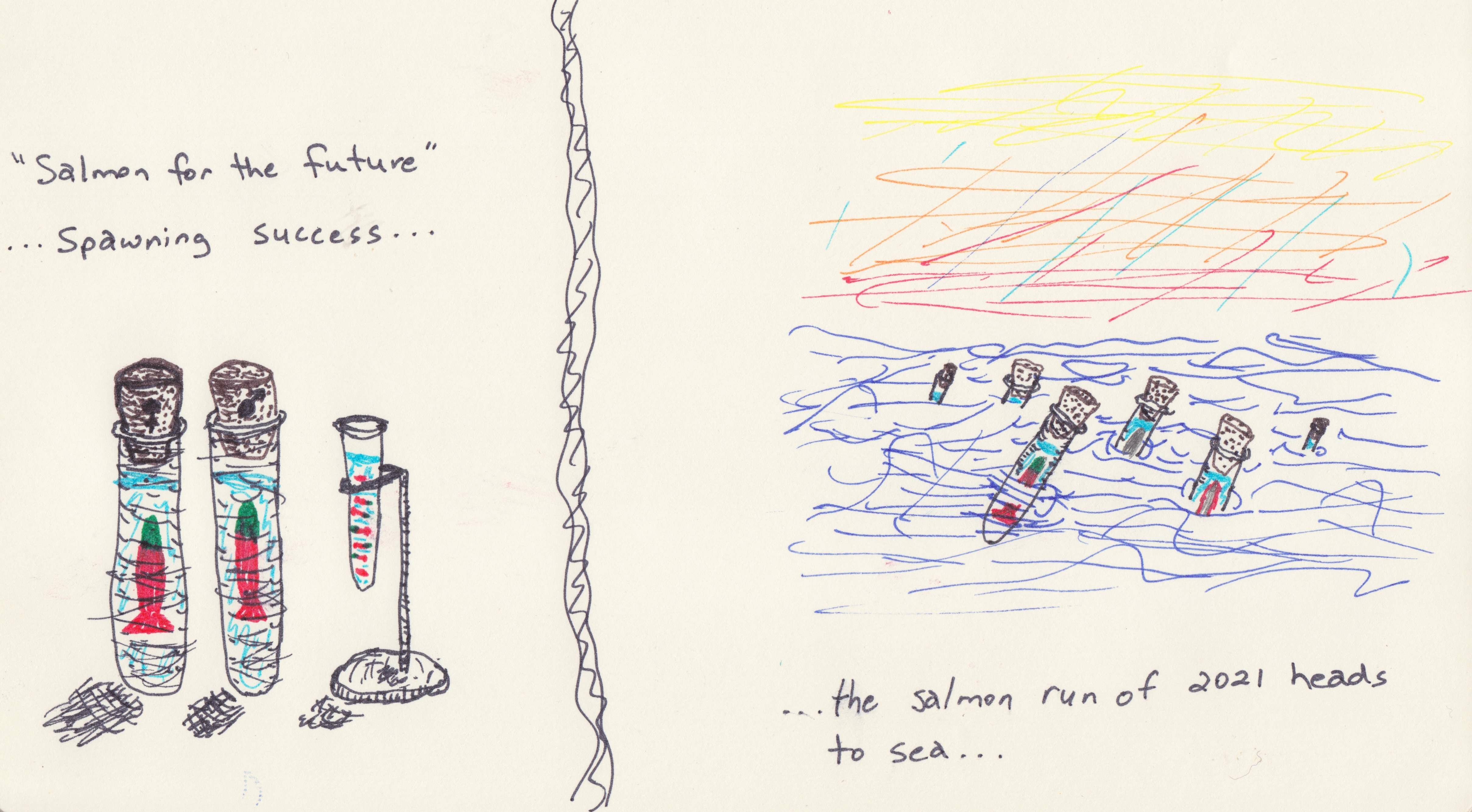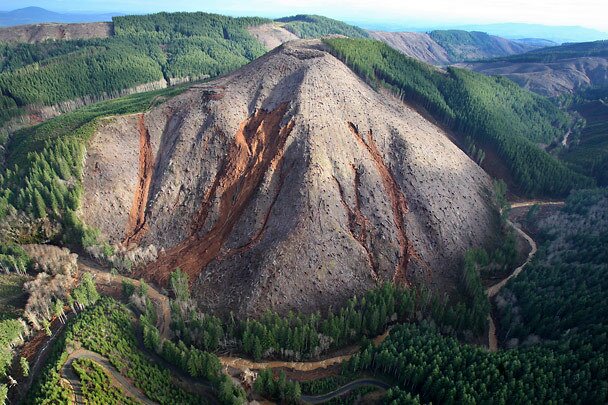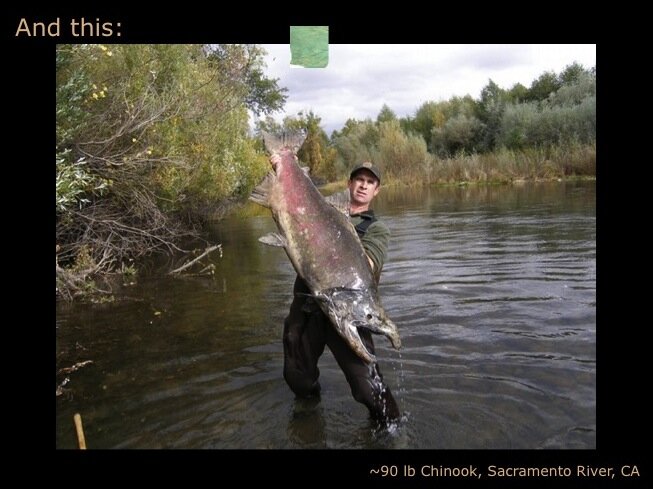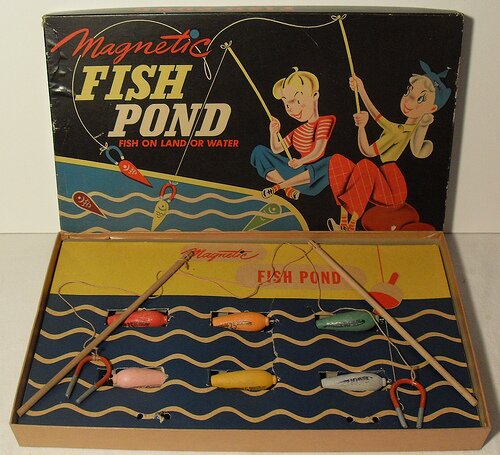
sockeye catch San Juans
for last year are posted on the Department of Fisheries and Oceans website.
Grand total in 2010 of salmon caught commercially: 6,777,763
With 5,774,694 of those being sockeye.
This is a cumulative weight of 17,757,562 kg. With a little over 15,000,000 kg of that being sockeye.
Grand total value of all salmon… $53,567,127
With sockeye making up a little over $44,000,000 of that.
_ _ _ _ _ _ _
Seems we’ve improved from the 2009 season (see popular post: ). Rough averages suggest we jumped last year to an approximate value of $8 per salmon…
Or, roughly, $1.30 a pound or so — on average.
_ _ _ _ _
On the sockeye front, the catch statistics suggest total sockeye landed = 5,774,694 with a landed weight of: 15,025,525 kg or approx. 33,000,000 pounds.
The total value of sockeye = $44,192,198
That’s about $1.33 per pound.
_ _ _ _ _
This fits in roughly with averages over the last few decades.
My question: Is it worth it?
_ _ _ _ _
And this is directed in so many different ways…
What does it cost these days for the operating costs of the Department of Fisheries and Oceans? What are the operating costs of the 100+ “salmon team” alone — including stock assessment, management, admin, etc.?
What does it cost to relocate, or shoot a starving bear rooting through some villages’ garbage because the local salmon runs disappeared?
What is the true value of what is required on the salmon habitat front — both protection/preservation and rehabilitation?
What does the Department of “Fisheries” & Oceans and the Department of Justice pay these days in court costs to argue that the First Nations fronting numerous challenges in relation to fishing rights — don’t actually have any rights, or had little involvement in trading fish and salmon pre-contact, and so on, and so on…? (mainly, it appears, to protect commercial and other interests — as why argue it otherwise?)
The Lax Kw’alaams band, located near Prince Rupert, claim a constitutional right to fish, not only salmon, but also halibut, herring and other species, commercially along the north coast.
The federal government maintains that aboriginal right to fish for food, social and ceremonial purposes does not extend to the right to sell fish.
The case has been winding its way through the legal system for five years. In 2006, the Lax Kw’alaams sued the federal government in B.C. Supreme Court, arguing their historical reliance on fish and centuriesold trade in fish oil gave them a modern right to a commercial harvest.
The old economic vs. environment argument starts to wear pretty thin when it comes to the value of commercial salmon fisheries.
This isn’t meant to paint those who still commercially fish with a bad brush. I know many who do — or did…
It’s more to ask the hard questions.
The Department of “Fisheries” & Oceans is aptly-named. It harkens of a bygone era and so does much of the culture within the institution (the “mustache” crowd as many folks have dubbed it). There are many good folks within the organization, with good intentions.
However, maybe a parallel could be drawn with sports teams that finish last. Maybe lots of good players and management — but often have adopted a losing culture, or an outdated culture.
How many senior managers, administrators, and asst. deputy ministers and otherwise within that organization were there in the heyday of high salmon prices and catches in the 1980s and otherwise?
For over a hundred years that organization has existed — and how many complete restructuring initiatives, re-culturing, or complete overhauls have happened?
Say… compared with other older organizations like General Electric, or Bell, or CN Rail or otherwise.
Most everything about the “management” of wild salmon is structured around who is going to catch them… from the Pacific Salmon Treaty and the Pacific Salmon Commission, through DFO.
And yet… up and down the coast of BC massive changes have occurred over the last few decades in every small (once) fishing-focused villages and towns. As the fisheries closed due to dwindling runs, canneries shuttered, dock pilings rotted, trollers turned into pleasure craft, bears starved, and the like — the Department of “Fisheries” simply became more concentrated in Vancouver and Ottawa.
Less regional offices, less regional staff, less stock assessment (because the stock just aren’t there to assess…), less habitat protection and monitoring, less enforcement — yet more and more and more paper.
MORE paper then one could ever imagine.
Look at the — an entire year extension and multi-million dollar budget expansion — largely due to paper (reports, emails, briefing notes, meeting notes, meeting minutes, Minister’s briefings, and so on and so on).
Teams of people blasting through PAPER… and more PAPER… and still… more PAPER.
Go look at the meeting schedules of DFO staff, or look on their website, or phone one of the employees and ask.
Meeting after meeting, after meeting…
meaning…
More PAPER.
When problems occur… what’s the solution… hire more people to produce more PAPER. Or get rid of people and load up the remaining folks with more paper…
It’s like the 4 P’s of Marketing recreated… People Pushing & Producing more Paper.
WHY?
For a $1.30 a pound?
_ _ _ _ _
There’s about 1.57 lbs in a litre of fuel. That means that at about $1.30 per liter of gas right now (more for diesel, but cheaper for marine fuel), that translates to roughly 87 cents a pound.
How many pounds of fuel does it take to catch a pound of salmon?
_ _ _ _ _ _
I came across a note the other day for a conference on building Resilient Communities in the face of climate change. The note suggested:

fish circle
Resilience Theory is a discussion about how communities and societies will adapt to climate change. We understand that we must mitigate climate change and adapt, or we will be in a very difficult place…
And yet, we don’t change our ways of “managing” salmon, or at least our relationship with salmon, to account for these same sorts of changes coming rapidly down the pipe.
When it comes to wild salmon in BC… we’re already in a “difficult place” and have been for years. Go ask… again… all the old fishing villages up and and down the coast. Go ask all the First Nation communities that have depended on yearly salmon returns for eons…
(or add up the costs of the fifth major ‘commission’ in less than two decades on how to better look after salmon)
If one reads through Pacific Salmon Commission and DFO documents — for example on Fraser Chinook — various ‘targets’ for ideal number of spawners (“escapement” they call it — which harkens to the time of counting spawners based on what “escaped” fisheries) are based on numbers derived in the 1980s.
I’m thinking there’s been a few changes in the habitat of Fraser Chinook since the 1980s and that they face a suite of challenges a little more dire than… say… the average water temperature in the Fraser River in the 1980s and earlier.
How has our ‘management’ of salmon changed to account for the dramatic changes occurring as a result of climate change? Some changes we won’t even know until there on top of us.
Look at ocean acidification on the Pacific coast… it has happened at a rate 50-times faster than any scientific models predicted. It’s there, and it’s getting worse.
Dead zones, etc.
Theories change, climate changes, cultures change, organizations change, nature changes… maybe it’s time for change in how we guide our relationship with wild salmon? Fundamentally change…
And what is a “department” anways…?
Free dicitonary online suggests it is: ”
A distinct, usually specialized division of a large organization, especially:
a. A principal administrative division of a government.
b. A division of a business specializing in a particular product or service. [e.g. “fisheries”]
An area of particular knowledge or responsibility; a specialty. [e.g. “fisheries”]
And see, running with this definition is exactly why salmon aquaculture was ruled by Canadian courts to revert back to the Federal government and the Federal department of fisheries and oceans from the Province of BC — because aquaculture was basically deemed a “fishery”. And under the division of powers in Canada that must be managed federally.
Thus, do we maybe need a new “Department”?
A ‘department’ of “fish and habitat conservation”.
Because it seems that the goals of keeping “fisheries” afloat can run directly in the face of conserving fish and habitat. And, therefore, we have a federal “department of conflicting mandates” (just as the anti-fish farm lobby consistently suggests…)
What would we call this specialized “department” if all salmon fisheries are curtailed?
“department of oceans”? (granted some other fisheries would still continue)
$8 per fish; $1.30 a pound… is it worth the risk?








